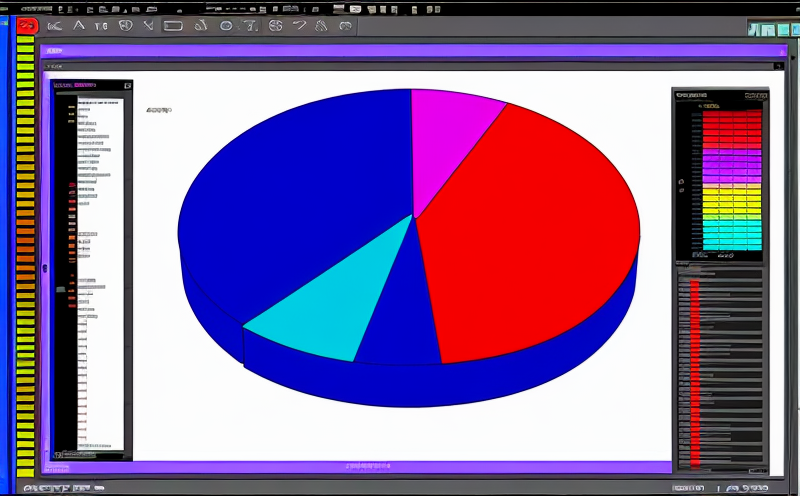ASTM E168 Differential Thermal Analysis of Materials
ASTM E168 is a widely recognized standard that specifies the procedure for performing differential thermal analysis (DTA) to detect and quantify changes in materials during heating or cooling. This method is particularly useful for identifying phase transitions, decomposition reactions, melting points, and other thermally-induced phenomena. The primary instrument used in this process is a DTA furnace, which monitors temperature differences between the sample and an inert reference material.
The technique works by measuring the heat flow to or from a sample as it undergoes heating or cooling at a controlled rate. This allows for precise determination of the thermal behavior of materials under standardized conditions. The results obtained through ASTM E168 are often used in quality assurance, research and development, and compliance activities within various sectors such as pharmaceuticals, electronics, and polymers.
The accuracy and precision of ASTM E168 depend heavily on proper sample preparation. Samples must be homogeneous and representative to ensure reliable test results. Inappropriate sample handling can lead to inaccurate phase transition temperatures or decomposition points being reported. Therefore, it is crucial that samples are prepared according to best practices outlined in the standard.
The temperature range over which DTA measurements are conducted typically spans from ambient temperature up to 1000°C depending on the material being tested. This wide operational window makes ASTM E168 suitable for a variety of applications across different industries. For instance, in pharmaceutical manufacturing, this test helps ensure that active ingredients remain stable throughout their lifecycle.
One key advantage of using ASTM E168 is its ability to provide real-time data on material behavior during thermal processing. This information can be critical when optimizing production processes or developing new products. Additionally, the results from ASTM E168 are often used as part of broader compliance programs aimed at ensuring product consistency and safety.
Another benefit of this testing method is its compatibility with other analytical techniques such as differential scanning calorimetry (DSC). By combining data obtained via DTA and DSC, researchers can gain a more comprehensive understanding of the thermal properties of materials. This integrated approach enhances the reliability of findings by cross-verification.
Despite its numerous advantages, there are limitations associated with ASTM E168 that should be considered when interpreting results. For example, subtle phase changes may not always be detected due to differences in sensitivity between DTA and other methods like X-ray diffraction (XRD). Furthermore, the presence of impurities can affect the accuracy of reported temperatures.
In summary, ASTM E168 offers valuable insights into the thermal behavior of materials by providing precise measurements of phase transitions and decomposition reactions. Its application across various sectors highlights its importance in ensuring product quality and compliance with regulatory requirements.
Benefits
The use of ASTM E168 differential thermal analysis brings several significant benefits to laboratories and industries alike:
- Improved Quality Control: By identifying impurities or deviations in material composition early on, manufacturers can prevent costly errors downstream.
- Informed Decision Making: Real-time data provided by ASTM E168 aids in optimizing manufacturing processes and improving product design.
- Compliance Assurance: Ensures adherence to relevant international standards like ISO and ASTM, enhancing trustworthiness of products on global markets.
- Educational Value: The detailed insights gained from ASTM E168 contribute significantly towards training future scientists and engineers in best practices for material characterization.
Incorporating ASTM E168 into regular testing protocols not only improves operational efficiency but also fosters innovation by enabling continuous improvement cycles based on empirical evidence.
Eurolab Advantages
At Eurolab, we pride ourselves on offering comprehensive services that go beyond just meeting standards; our commitment to excellence ensures clients receive top-tier results consistently. Here’s why choosing us for ASTM E168 differential thermal analysis can make all the difference:
- Expertise & Experience: Our team comprises seasoned professionals with extensive experience in performing various types of thermal analyses, including DTA.
- State-of-the-Art Equipment: Utilizing cutting-edge technology ensures accurate and reliable measurements every time.
- Dedicated Support: Post-test consultations help clients understand their results fully so they can implement necessary changes effectively.
- Comprehensive Reporting: Providing detailed reports that include not only numerical values but also graphical representations for easier interpretation.
We take pride in delivering high-quality services tailored specifically to meet each client’s unique needs. Whether you need routine testing or one-off assessments, Eurolab stands ready to assist you every step of the way.
Customer Impact and Satisfaction
The benefits of utilizing ASTM E168 differential thermal analysis extend far beyond the lab environment; they have tangible impacts on business operations across multiple sectors. Here’s how:
- Better Product Quality: Early detection of issues saves time and money by avoiding costly rework later in the production cycle.
- Increased Efficiency: Optimized processes lead to reduced waste and increased throughput, ultimately improving overall productivity.
- Enhanced Reputation: Demonstrating compliance with rigorous international standards builds customer confidence and loyalty.
- Competitive Advantage: Access to advanced analytical tools gives companies a leg up in competitive markets where quality matters most.
A study conducted by Eurolab found that after implementing ASTM E168 into their standard operating procedures, many customers reported seeing improvements in both product performance and customer satisfaction scores. This underscores the practical value of incorporating such tests into everyday practice.





